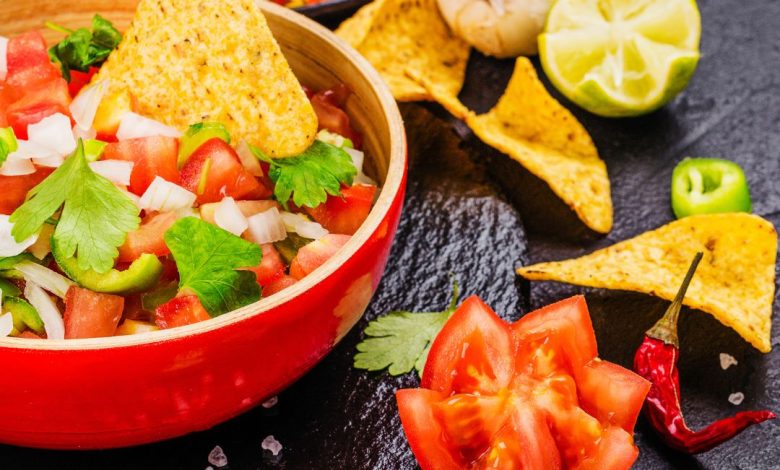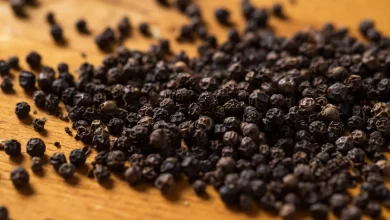The Essential Guide to Mexican Herbs and Spices

Mexican cuisine is renowned for its bold flavors and vibrant spices. At the heart of these tantalizing flavors are the herbs and spices that play a crucial role in Mexican cooking. In this comprehensive guide, we will explore the essential Mexican herbs and spices that bring the authentic taste of Mexico to your kitchen. From the earthy notes of oregano to the fiery heat of chili peppers, each ingredient adds its unique character to the diverse and delicious world of Mexican cuisine. So, let’s embark on a flavorful journey and discover the key herbs and spices of Mexico.
Ancho Chili Pepper
The Ancho chili pepper is a staple in Mexican cuisine, known for its mild heat and rich, smoky flavor. It is a dried poblano pepper that adds depth and complexity to dishes like mole sauces, chili con carne, and enchilada sauces. The Ancho chili pepper is often toasted and ground into a powder, making it a versatile ingredient that can be used in rubs, marinades, and spice blends.
Cilantro
Cilantro, also known as coriander leaves, is a ubiquitous herb in Mexican cooking. It has a bright and citrusy flavor that adds freshness to salsas, guacamole, and ceviche. Cilantro is best used fresh and is often added as a garnish to impart a vibrant flavor to dishes like tacos, soups, and salads.
Epazote
Epazote is a pungent herb commonly used in Mexican cuisine, particularly in bean dishes. It has a unique flavor that can be described as earthy, citrusy, and slightly minty. Epazote helps to reduce the gassy effect of beans and is used in recipes like black bean soup and refried beans. It is best added during the cooking process to infuse its distinct flavor into the dish.
Mexican Oregano
Mexican oregano is a variety of oregano that has a more robust and citrusy flavor compared to its Mediterranean counterpart. It is commonly used in Mexican dishes like chili, salsa, and marinades. Mexican oregano pairs well with other Mexican spices and adds a depth of flavor to savory dishes.
Chipotle Chili Pepper
Chipotle chili peppers are dried and smoked jalapeno peppers that bring a smoky and intense heat to Mexican dishes. They have a distinctive flavor that is both spicy and slightly sweet. Chipotle peppers are often used in adobo sauce, marinades, and salsas, lending their unique smoky taste to a variety of recipes.
Mexican Cinnamon
Mexican cinnamon, also known as Ceylon cinnamon, is a sweeter and more delicate variety compared to the common cassia cinnamon. It has a warm and aromatic flavor that is used in both sweet and savory Mexican dishes. Mexican cinnamon adds a subtle sweetness to desserts like churros, arroz con leche, and Mexican hot chocolate.
Achiote Seeds
Achiote seeds, also known as annatto seeds, are small reddish-brown seeds with a mild peppery flavor. They are used to make achiote paste, which is a traditional ingredient in many Mexican dishes. Achiote paste is known for its vibrant red color and is used as a marinade for meats, as a seasoning for rice, or as a base for sauces and stews.
Mexican Vanilla
Mexican vanilla is highly prized for its rich and creamy flavor. It has a sweet and floral aroma that enhances desserts, baked goods, and beverages. Mexican vanilla is often used in traditional Mexican desserts like flan, tres leches cake, and Mexican wedding cookies, adding a distinct and indulgent taste.
FAQs (Frequently Asked Questions)
1. Where can I find these Mexican herbs and spices?
You can find Mexican herbs and spices in most grocery stores, particularly those with a well-stocked spice section. If you prefer a wider selection or want to explore specialty stores, ethnic markets or online retailers that specialize in Mexican ingredients are excellent sources for authentic Mexican herbs and spices.
2. Can I substitute regular oregano for Mexican oregano?
While regular oregano can be substituted for Mexican oregano in a pinch, the flavors will be slightly different. Mexican oregano has a more citrusy and robust flavor compared to the Mediterranean variety. If you can’t find Mexican oregano, consider using a combination of regular oregano, marjoram, and a touch of citrus zest to mimic the flavor profile.
3. Are Mexican chili peppers very spicy?
Mexican chili peppers vary in heat levels, ranging from mild to extremely spicy. It’s essential to taste and understand the heat level of the specific chili pepper you are using before adding it to your dish. Start with small quantities and adjust to your desired level of spiciness.
4. Can I grow Mexican herbs at home?
Yes, many Mexican herbs can be successfully grown at home, both indoors and outdoors, depending on your climate. Cilantro, for example, is relatively easy to grow in a sunny spot or even in a container. Epazote and Mexican oregano can also be grown in herb gardens or pots with proper care and attention.
5. Are there any health benefits associated with Mexican herbs and spices?
Mexican herbs and spices, like many other herbs and spices, offer various potential health benefits. Cilantro, for instance, is rich in antioxidants and may help support digestion. Chili peppers contain capsaicin, which is known for its potential anti-inflammatory and metabolism-boosting properties. However, it’s important to note that individual reactions and sensitivities may vary, and it’s always advisable to consult with a healthcare professional regarding specific health concerns.
6. How can I incorporate these Mexican herbs and spices into my cooking?
Mexican herbs and spices can be used in a wide range of dishes to add authentic Mexican flavors. Experiment with them in marinades, rubs, salsas, soups, stews, sauces, and even desserts. Start with small amounts and gradually adjust to achieve the desired taste. The key is to have fun and explore the diverse and exciting world of Mexican cuisine.
Conclusion
Mexican herbs and spices are the essence of Mexican cuisine, bringing depth, complexity, and unique flavors to traditional dishes. From the smoky heat of chipotle peppers to the refreshing zing of cilantro, each herb and spice contributes to the vibrant tapestry of Mexican flavors. By incorporating these essential ingredients into your cooking, you can recreate the authentic taste of Mexico in your own kitchen. So, grab your apron, gather these flavorful companions, and embark on a culinary journey filled with the rich heritage and delicious delights of Mexican cuisine.




